NOTE: For prior parts in the Hizballah Cavalcade series you can view an archive of it all here.
–
Selling Sectarianism: Shia Islamist Groups & Maliki’s Anbar Offensive
By Phillip Smyth
As the Iraqi government offensive in Anbar continues to engage Sunni groups which are protesting the government (some have now taken up arms against the government) and the Islamic State of Iraq and al-Sham (ISIS), sectarian messaging by Shia Islamist groups which support the government and its offensive has also increased.
Coming after the operation against jihadi militants on December 23, 2013 and following protests by Sunni groups (including a number of tribes), on December 25 Iraqi Prime Minister Nouri al-Maliki announced an offensive against ISIS and “armed groups” in Iraq’s Anbar province. The offensive has been controversial regionally and within Iraq, with some accusing Maliki of engaging in sectarian politics.[1] Analyst Charles Lister even called the coordinated offensive, “one move too far”.[2]
Sectarian language explaining the Iraqi government onslaught has been utilized by all sides. Even Nouri al-Maliki called the operations, “a fierce confrontation between the supporters of Hussain and the supporters of Yazid”.[3] Shia Islamist groups, including Iranian-backed and possibly those claiming to back Iraqi Shia cleric and political leader Muqtada al-Sadr, have taken the opportunity to issue statements, upload photos, and produce music in support for the Iraqi government’s operations.[4] For these groups, the offensive was viewed as a golden opportunity to demonstrate their importance to the Iraqi Shia community and to demonstrate they were assisting the fight against jihadi-type organizations. These groups also played upon sectarian sentiments to promote the Iraqi government’s operations and suggest that the Iraqi Army is a pro-Shia sectarian entity. There were also claims that some Iraqi Shia Islamist forces which had fought in Syria, returned to fight ISIS and other Sunni groups in Iraq.
Statements of Support
On December 28, Ahmed al-Alwani, a Sunni parliamentarian and protest leader, was arrested by Iraqi security forces. The raid against him resulted in the death of Alwani’s brother and a number of guards from his security profile.[5] Alwani was well-known for vitriolic anti-Shi’ite statements.[6] His arrest by Iraqi security forces was immediately praised by some Shia Islamist groups, particularly Asa’ib Ahl al-Haq, which praised the raid (see photos below). The day also saw a near simultaneous release of statements by Iranian-backed Shia Islamist organizations which are also fielding armed units in Syria.
Liwa’a Zulfiqar, a Syria-based Shia Islamist armed group, also announced its support for the Iraqi Army in its operations against ISIS and announced they would stand by them against, “racist Zionist terrorism”. This represents a continuance of the narrative that armed Shia Islamist groups (primarily backed by Iran) consider al-Qa’ida and its allied organizations as merely agents of Israel. On the same day, Kata’ib Sayyid al-Shuhada, released its second publicly available official communique. The statement stressed their support for the Iraqi Army’s fight in Anbar. Asa’ib Ahl al-Haq also issued their own messages of support for the offensive against ISIS.
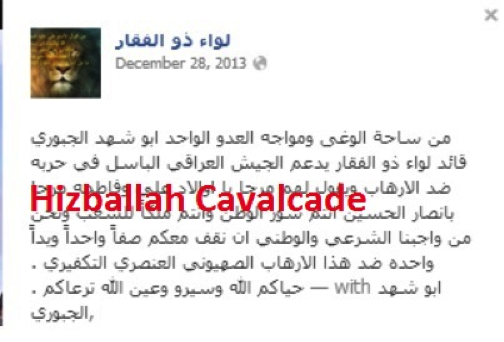
Figure 1: An announcement of support for the Iraqi Army’s efforts in Anbar from the official Liwa’a al-Zulfiqar Facebook page.
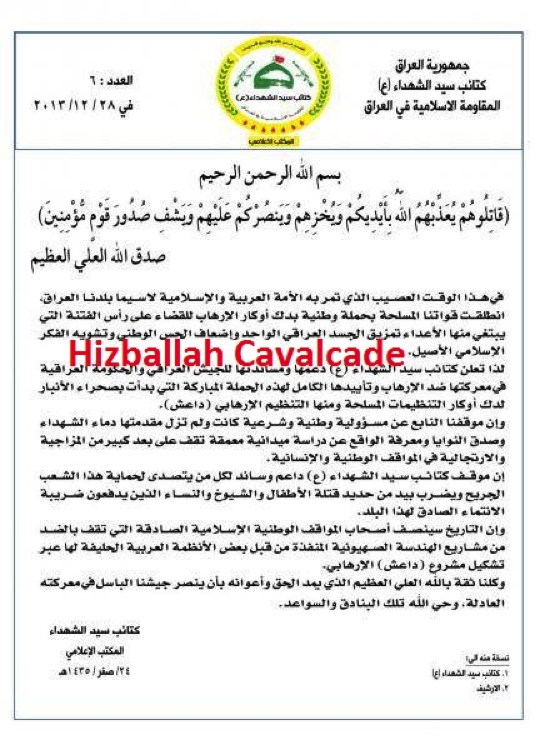
Figure 2: Kata’ib Sayyid al-Shuhada’s release in support of the Iraqi government’s offensive into Anbar.
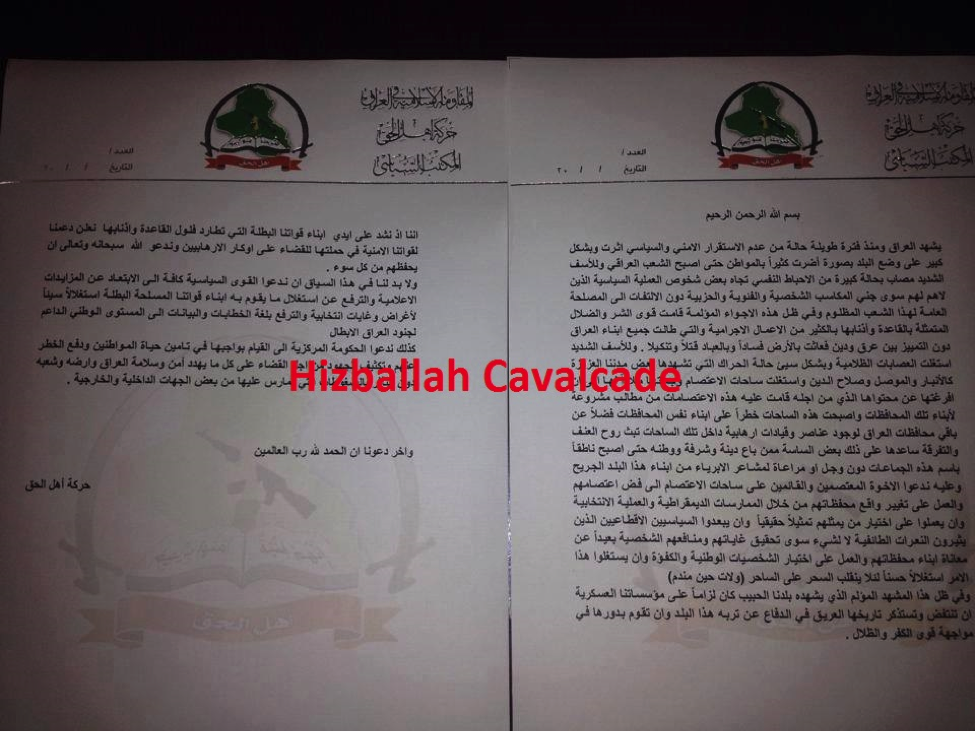
Figure 3: Asa’ib Ahl al-Haq’s statement about their support for the Iraqi government and military against ISIS and armed groups in the country.
Main Messaging Themes:
- National Institutions: Shia Islamist groups have claimed to fully support the Iraqi Army and present themselves as integral elements to the Iraqi military and police operations in Anbar. This theme coincides with other Iranian-backed organizations messaging, namely the narrative presented by Lebanese Hizballah and their claims of fully backing the Lebanese Armed Forces.[7]
- One Army, One Sect: Photos and statements implying the Iraqi military and police are engaging in the fight against ISIS to defend Shi’ism. These themes are also combined with photos claiming to show members of the military and/or police showing support for certain Shia political leaders and clerics. This sort of rhetoric had gone on since the spring of 2013 during the initial announcements of foreign Shia fighter involvement in Syria. In one May 2013 photo, a soldier reportedly from the Iraqi Army is shown holding a Shia religious banner on top of what is claimed to be an Iraqi military armored vehicle (see below).
- Two Fronts, One War: Tying the war in Syria to the fighting in Iraq involves extending the “Defense of the Sayyida Zaynab” (the defense of the Sayyida Zaynab shrine in southern Damascus is held as the reason for Shia Islamist fighters are in Syria) narrative which claims Shia Islamist armed groups are present in Syria to protect holy shrines/Shi’ism and stop jihadi-linked fighters. As a result, the engagements within Iraq which claim to also target ISIS and other organizations are grouped together as part of a unified effort to protect Shi’ism.
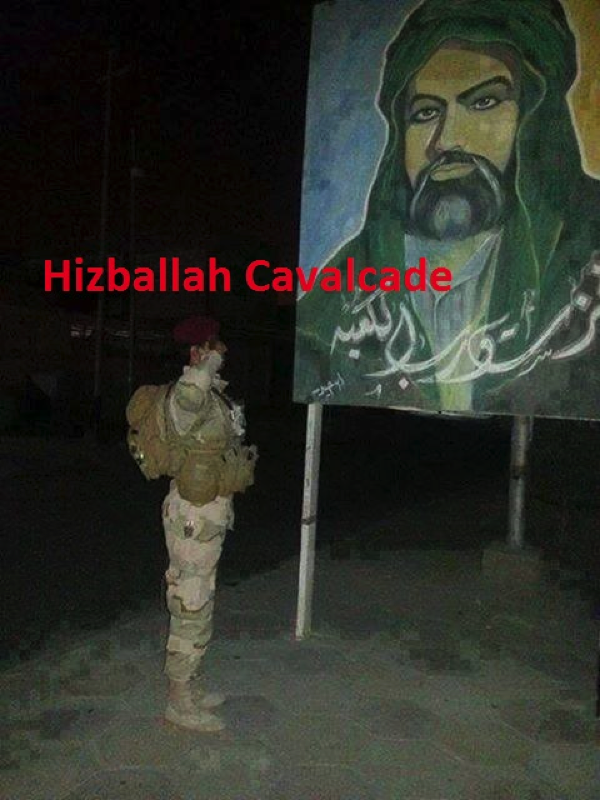
Figure 4: A photo uploaded in mid-January with the caption, “We will not be defeated”. The photo reportedly shows an Iraqi Army soldier saluting a Shia religious poster.
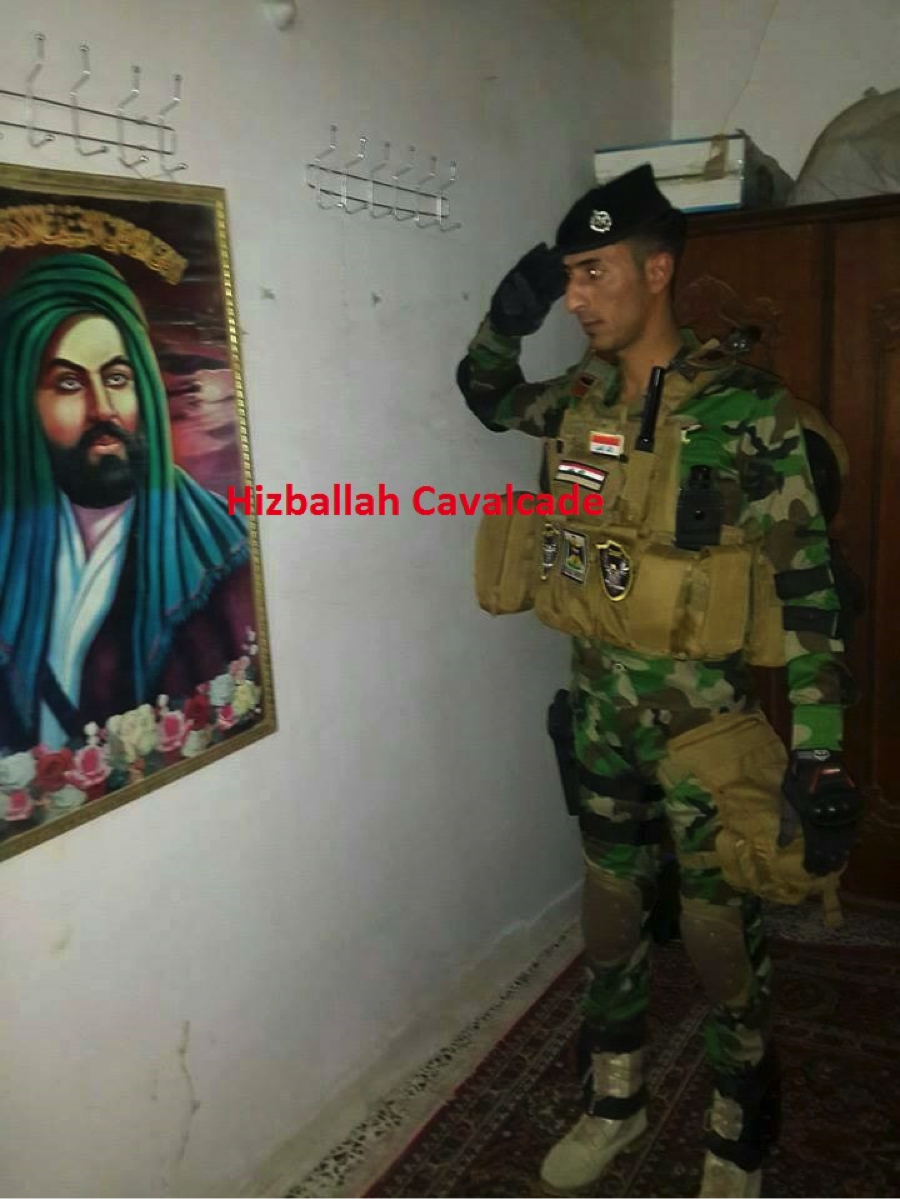
Figure 5: Photo claims to show an Iraqi soldier saluting a picture of martyred Shia leader, Imam Husayn. The photo was posted onto numerous social media pages catering to Shia Islamist fighters in Syria.
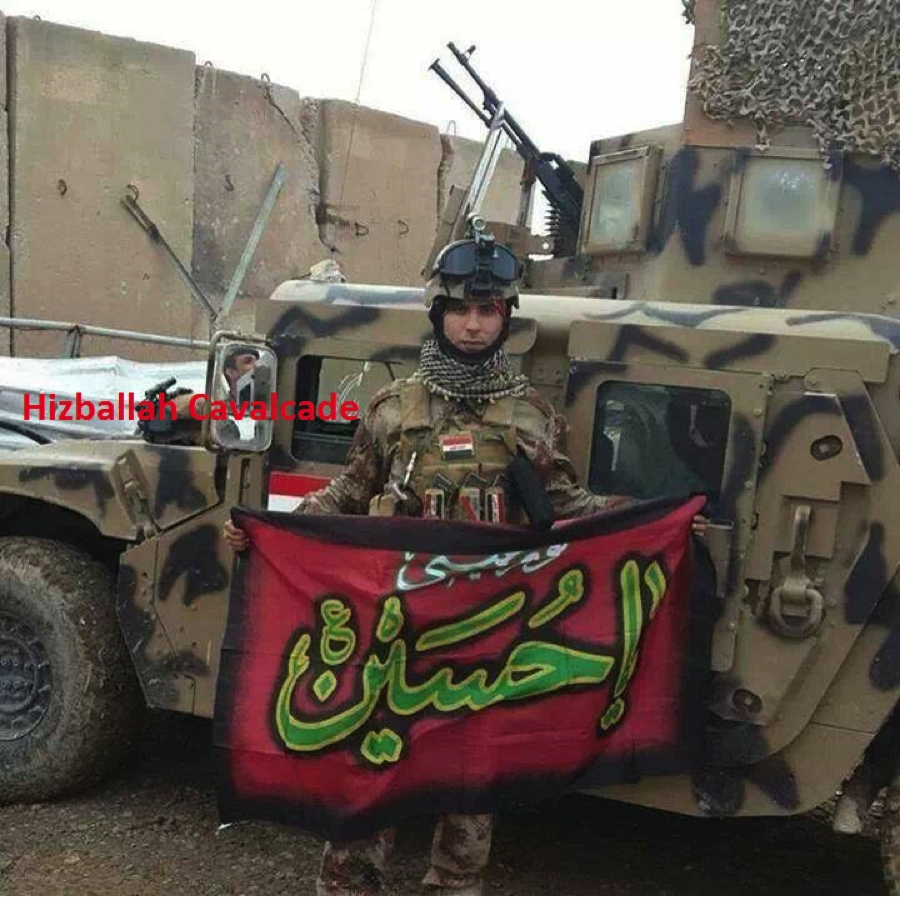
Figure 6: This photo claims to show an Iraqi soldier holding an Imam Husayn flag in front of an armored vehicle. The photo was widely circulated on Shia Islamist social media pages.
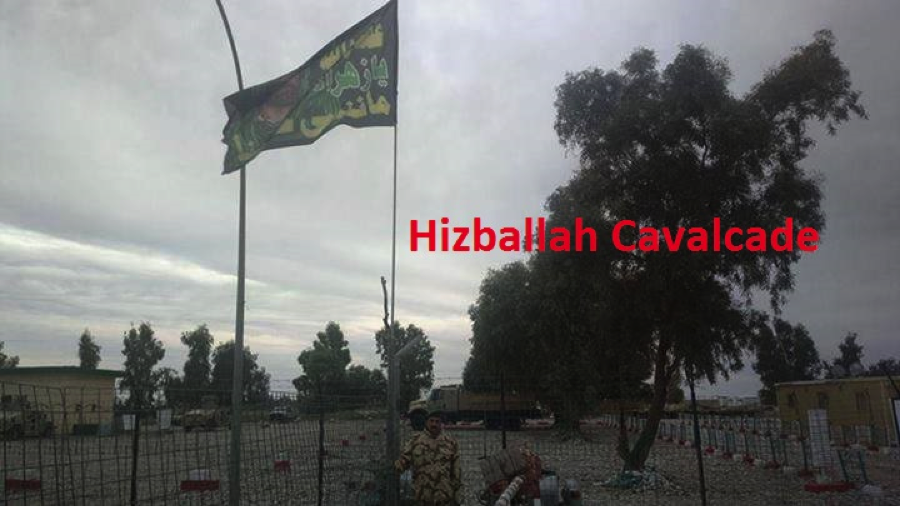
Figure 7: Photo purports to show an Iraqi soldier under a Shia banner following the, “Capture of Ramadi”. The photo was posted on Badr Organization and Asa’ib Ahl al-Haq social media pages.

Figure 8: This photo claimed to show an Iraqi soldier saluting Iranian Supreme Leader Ayatollah Khamenei.
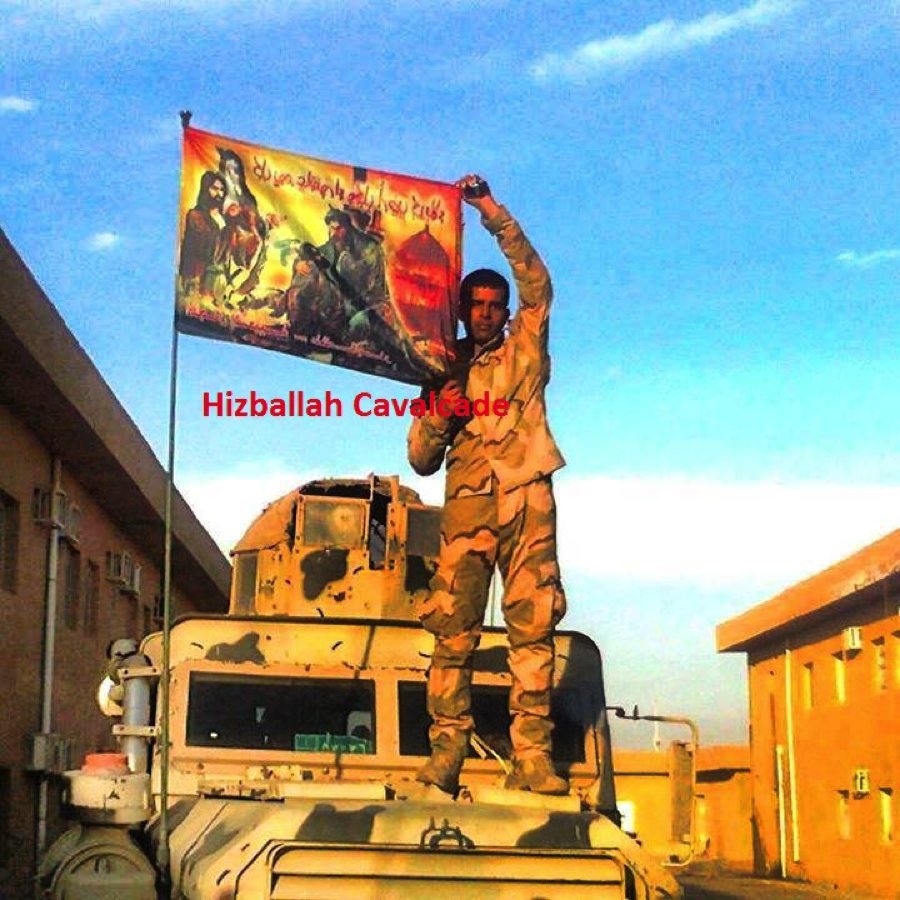
Figure 9: First uploaded to Shi’a Islamist social media in May 2013, this photo claims to show an Iraqi soldier atop an armored vehicle holding a Shi’a religious banner.
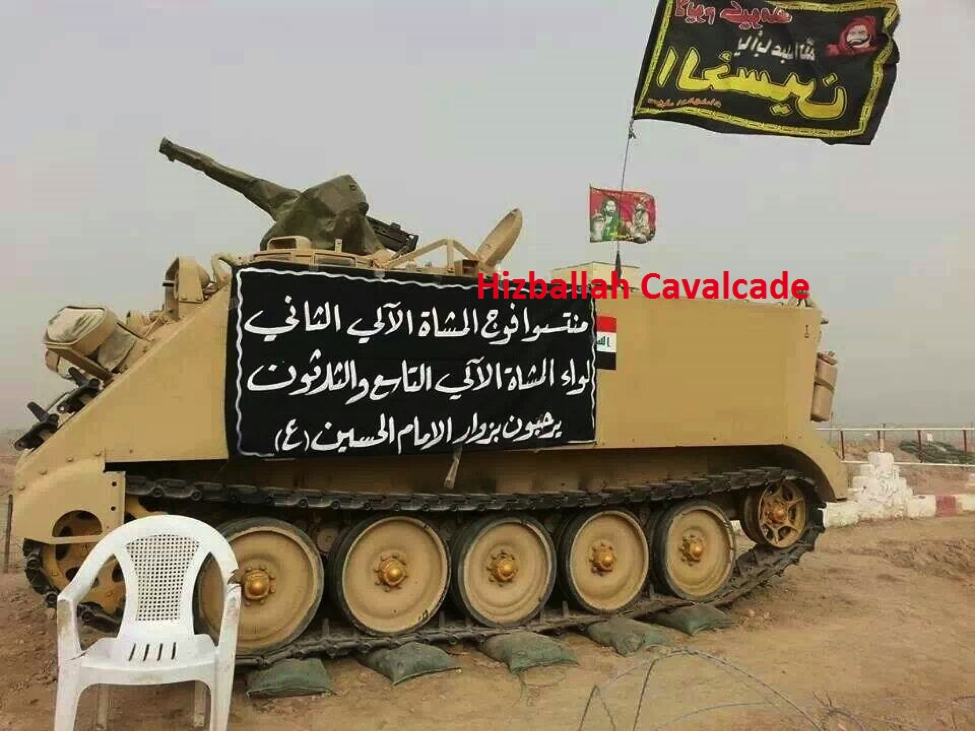
Figure 10: An Iraqi armored personnel carrier (APC) flying flags for Shia Imam Husayn with a sign partially reading, “Welcoming visitors to Imam Husayn [mosque and shrine in Karbala, Iraq]”. While the context of the photo is probably more innocuous—It is likely this APC was simply part of a guard set up in Karbala and was used to welcome pilgrims—ISIS/Sunni Islamist activists and Shia Islamist groups circulated the photograph as proof of the Iraqi Army’s sectarian loyalties.
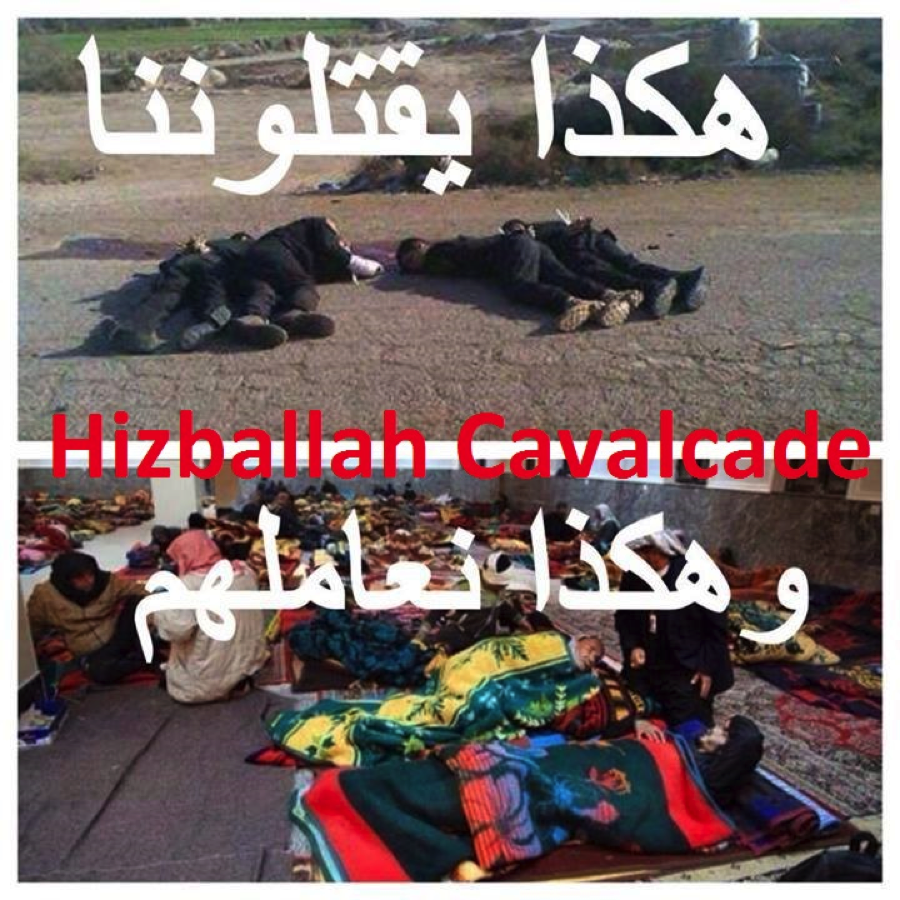
Figure 11: Top photo: “This is how they kill us”. Bottom photo: “And this is how we treat them”. The top picture shows Iraqi soldiers executed by ISIS. The bottom references reports of Shia Muslims taking in Sunni Muslim refugees from Anbar.[8] The photo was not widely distributed, but could be found on pages and profiles catering to Iranian-backed Shia Islamist organizations (mainly Asa’ib Ahl al-Haq).
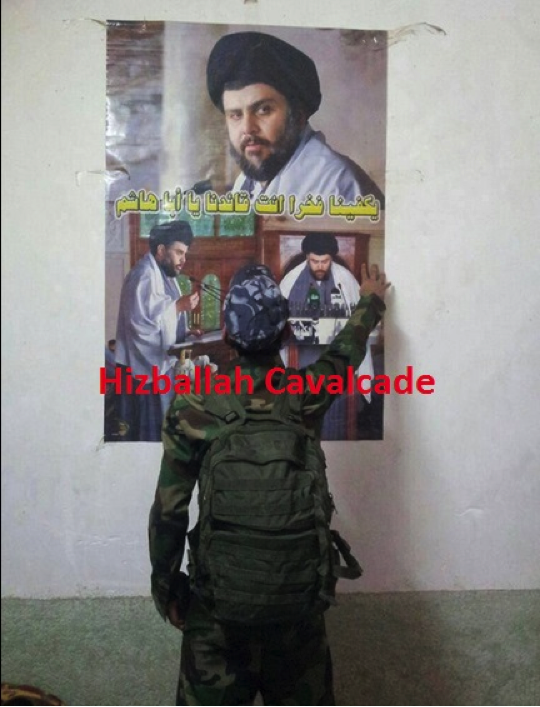
Figure 12: This photo, spread on Sadrist and Sadr-splinter group social media, claims to show an Iraqi soldier reaching out to a Muqtada al-Sadr poster.
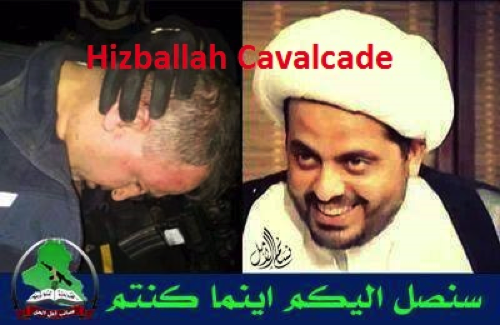
Figure 13: Asa’ib Ahl al-Haq leader Qais al-Khazali smiles (right) while Iraqi Sunni MP Ahmed al-Alwani is detained by Iraqi security forces (left).

Figure 14: Qais al-Khazali is portrayed as walking on the captured Iraqi Sunni MP Alwani.

Figure 15: “Thus, we support you”. An AAH poster shows AAH leaer Qais al-Khazali looking down on Iraqi army soldiers and an Iraqi helicopter.
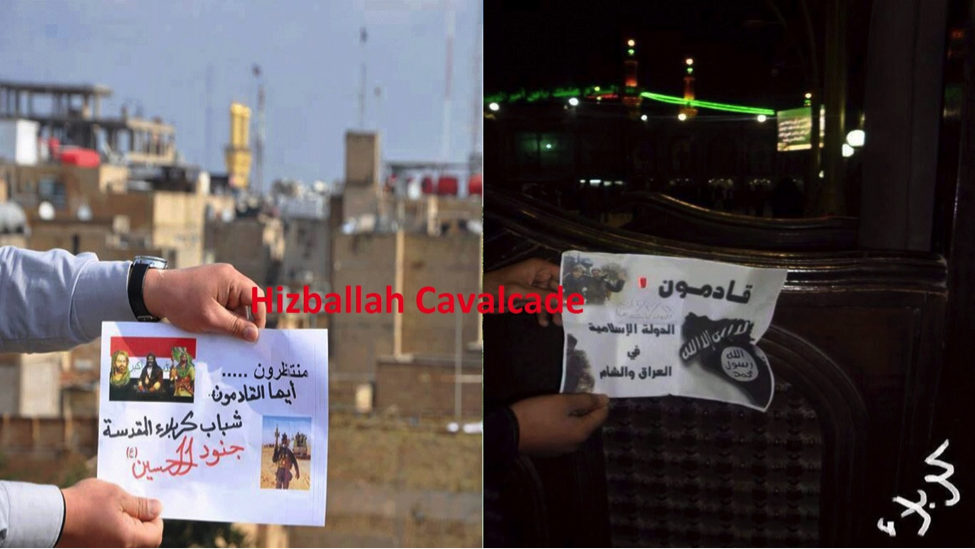
Figure 16: Selfie Taunts: On the right an ISIS supporter holds up a picture near the Imam Husayn Mosque/Shrine complex in Karbala. The sign reads, “Qadimoun” (“We are coming”). As a response to the pro-ISIS message, (on the left) “We are waiting for those coming, [we] the young men of sacred Karbala Soldiers of Husayn”.
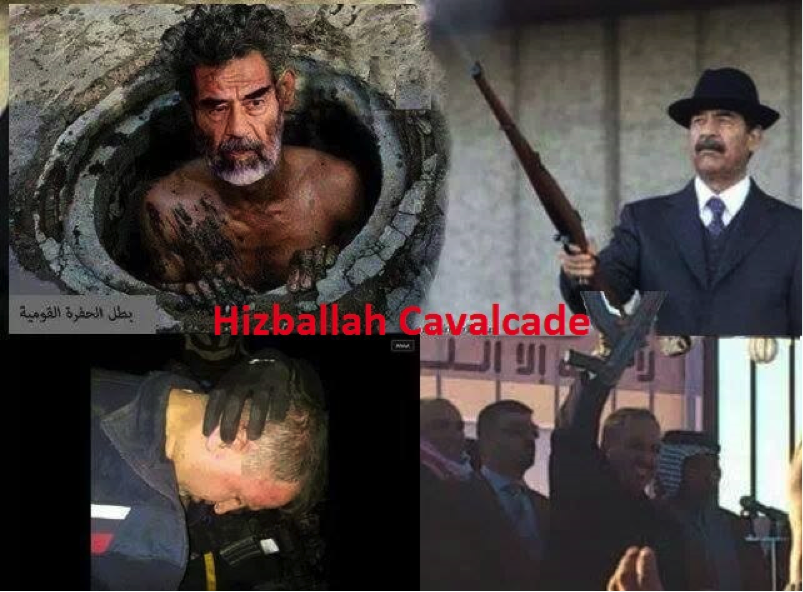
Figure 17: Right Left (top) An edited photo shows deposed Iraqi leader Saddam Husayn emerging from a dirty sewer. Left (bottom) Alwani is shown following his capture. The photo was spread on Sadrist and Iranian-backed Shia Islamist pages. The image promotes a theme of “how the mighty have fallen.”

Figure 18: Another photo released on social media claiming to show Iraqi APCs flying Shia religious flags. The photos were shared online by ISIS sympathizers and Shia Islamist groups. The latter used the photos as a subtle way to suggest the Iraqi Army had Shia Islamic sectarian loyalties.
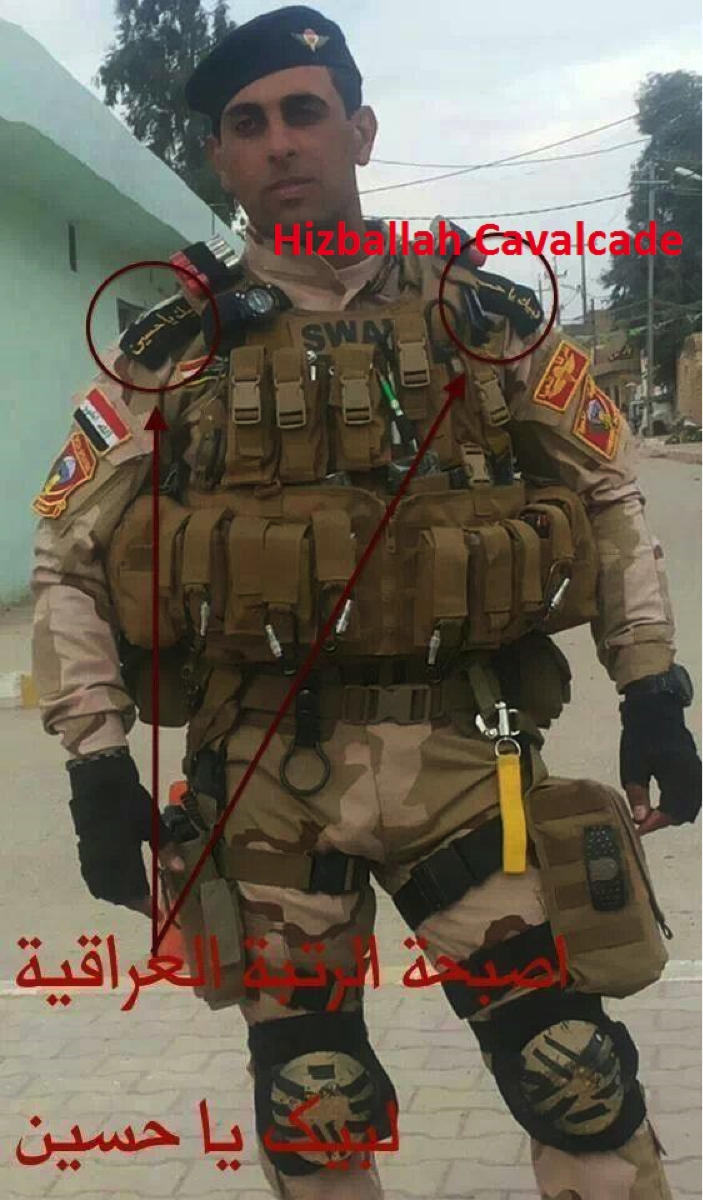
Figure 19: Shia Islamist and Sunni supporters of the protests and of ISIS circulated this photo on social media (including Twitter and Facebook). The photo purports to show an Iraqi Special Forces/SWAT member wearing epaulettes reading, “Labayk ya Husayn” (“At your service, O Husayn”), a Shia slogan used to show support for the Shi’ism’s first Imam.
One video uploaded claimed to show Iraqi units assembling before heading into Anbar and flying Shia religious flags. Due to the lower quality of the images in the video, the claim could not be confirmed. Accounts affiliated with Asa’ib Ahl al-Haq also uploaded a response to the offensive against ISIS. In their clip, a man sets up a system for a unmanned aerial vehicle (UAV) which then spots what can assumed to be ISIS positions. The ISIS positions are then destroyed. The clip was entitled, “A message from Asa’ib Ahl al-Haq to Da’sh” (note: Da’sh is the Arabic acronym for ISIS).
Redeployments from Syria?
The charge that Iraqi Shia Islamist fighters who were initially placed in Syria, and that have returned to Iraq in order to fight ISIS and other Sunni groups, has been a reoccurring theme among fighters aligned with Shia Islamist groups, ISIS supporters, and those who back local Sunni groups. On social media a number of hints were left in posted images. One Asa’ib Ahl al-Haq profile claimed that an Asa’ib Ahl al-Haq had sent fighters (possibly those who had fought in Syria and rotated back to Iraq) to battle ISIS and other groups in Fallujah. Another image claimed fighters from the Rapid Reaction Force (a group of Iraqi Shia fighters who were some of the first trained units of Shia foreign fighters in Syria) were also redeployed to Anbar after operating around the Sayyida Zaynab mosque and shrine in Damascus.
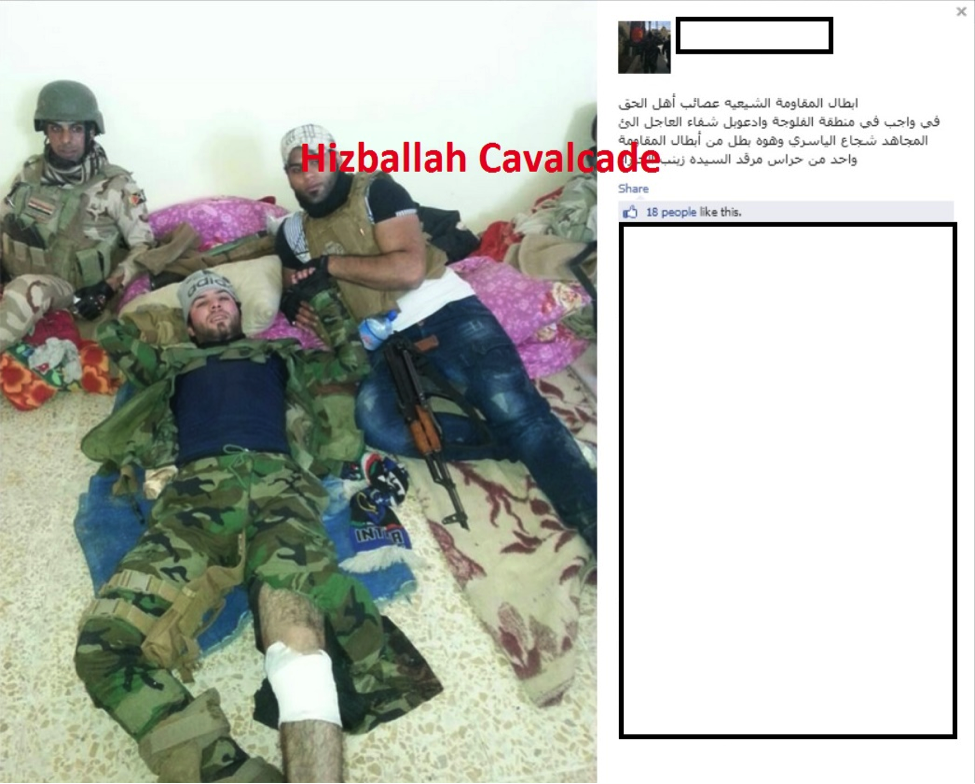
Figure 20: A January 8 post claiming AAH was deploying to Fallujah and wished for quick recovery (due to an injury) for one of AAH’s fighters.
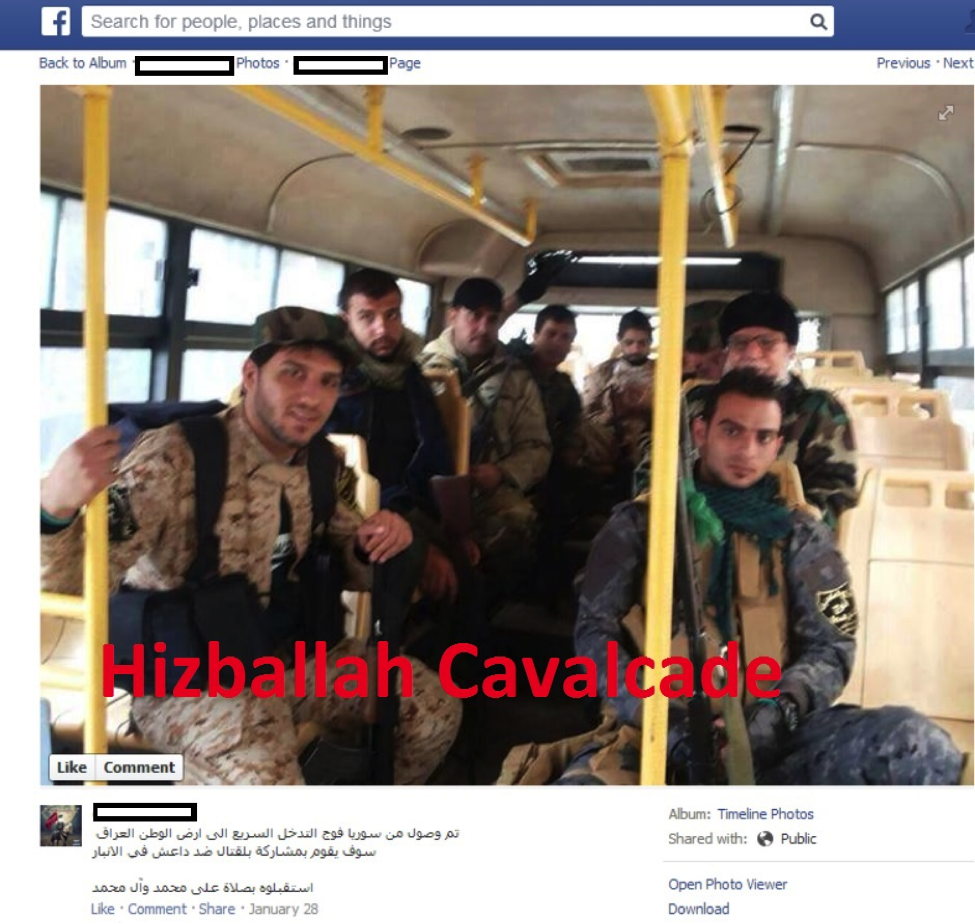
Figure 21: A January 28 post claiming the Rapid Reaction Forces which have been involved in fighting in Syria were returning to Iraq to fight ISIS in Anbar.
A Da’sh of Music
Musicians who could broadly be described as “Sadrist” and those who have supported Iranian-backed organizations have produced a number of songs with content calling out ISIS and demonstrating their support for the Iraqi government. These musicians have acted as additional amplifiers for the uploaded imagery, videos, and other material available online. Since their work is already known and exposed to those familiar with it, the circulation of the released material is at least guaranteed among a certain subset of Shia Islamists in Iraq and possibly those fighting in Syria.
Usama al-Salihi, a Sadrist performer, released a song called “Ya Da’sh” or “O Da’sh” in early January.
Ali Delfi, Ahmed Sa’adi, Ghassan al-Shami, Fadhl Hasan, and Malik al-Asadi teamed-up to create the “Operetta for [Our] Master and Precious One”, a song full of praise for Muqtada al-Sadr, which mocks ISIS. Fadhl Hasan, a poet/lyricist, claims to be a Sadrist and has published material supportive of Kata’ib Hizballah, Asa’ib Ahl al-Haq, Liwa’a al-Yum al-Mawud, and Kata’ib Sayyid al-Shuhada on his Facebook page. Al-Asadi is known for his religious songs. Delfi and Sa’adi (who have performed together) have a long history of making songs for Asa’ib Ahl al-Haq and praise the group’s actions in Syria. Their music video featured Liwa’a al-Yum al-Mawud attacks against Coalition vehicles during the Iraq War (2003), footage of the Iraqi Army, and praise for Muqtada al-Sadr.
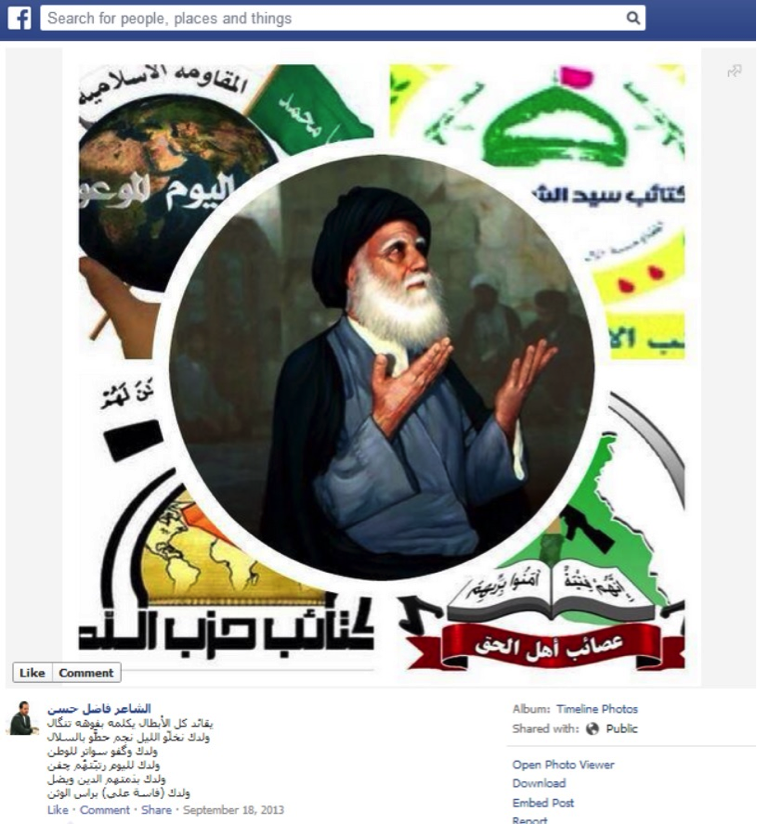
Figure 22: A post for Fadhl Hasan’s page with Grand Ayatollah Muhammed Muhammed Sadiq Sadr in the center. The logos for Liwa’a al-Yum al-Mawud (top left), Kata’ib Sayyid al-Shuhada (top right), Kata’ib Hizballah (bottom left), and Asa’ib Ahl al-Haq (bottom right) are in the background.
Issa al-Fareeji, a Sadrist singer who has performed songs praising Liwa’a al-Yum al-Mawud (The Promised Day Brigades, a Sadrist successor group to Jaysh al-Mahdi which received assistance from Iran), released one piece with relative Hussam al-Fareeji. Their song, “La Da’sh” or “No ISIS”, was released onto YouTube in late January 2014.
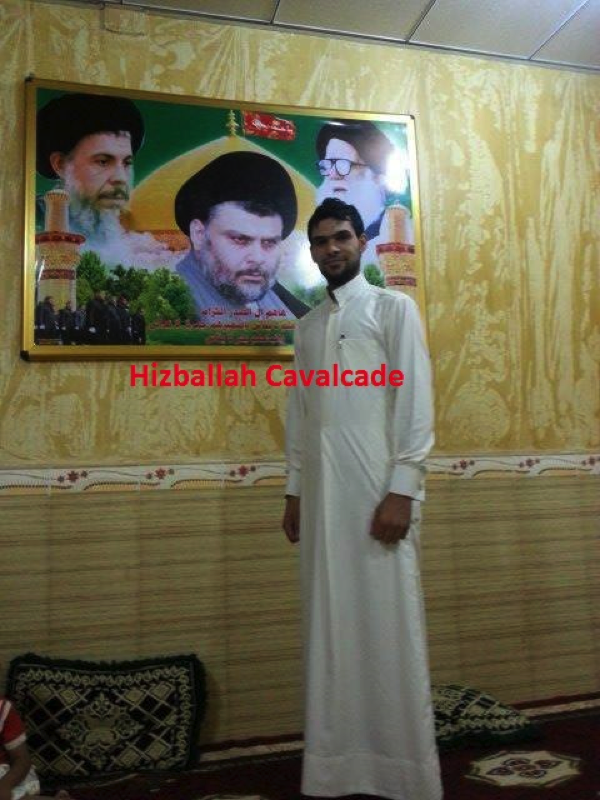
Figure 23: Usama Salihi posing with a picture of Muqtada al-Sadr (center), Grand Ayatollah Muhammed Baqir al-Sadr (left), Grand Ayatollah Muhammed Muhammed Sadiq al-Sadr (right).
Their song was one of a small wave of songs performed by artists who affiliate with Liwa’a al-Yum al-Mawud, Muqtada al-Sadr, and Iranian-backed organizations. Since January 25, 2014 around ten songs praising the Iraqi Army and criticizing ISIS have been released online. Some songs have music videos while others are simply audio releases. All of the artists have had links with Liwa’a al-Yum al-Mawud or other Iranian-backed organizations.
Another song produced by a Shia Islamist performer and gaining in popularity on social media was performed by Ahmed Zarkani. Zarkani’s song, “Minu Da’sh” (“He is not Da’sh”—Note: This is Iraqi slang) also laces into ISIS and praises the Iraqi Army.
Zarkani is best known for his overtly sectarian latmiyat-type performances which have included a portion of tatbir, or the period of mourning which includes ritualistic self-flagellation for Imam Husayn ibn Ali.[9] At times during this mourning ritual there is the ceremonial cutting of one’s head with a sword (zanjeer zani). The cutting of one’s head is used to represent suffering by the martyred Imam Husayn.[10] Latmiyat, or sad spoken word poems are meant to commemorate loss (during Ashura many latmiyat are about Imam Husayn). These themes have found its way into a number of Zarkani’s works and underline the Shia-oriented messaging. His releases have often included the rhythmic sounds self-flagellation (often from hands slapping the chest) and have been popularized (and also been used for more militant and political uses) in recent years as an intrinsic piece of Shia identity (Islamist and non-Islamist). Zarkani’s material has also praised efforts by Shia Islamist fighters in Syria and is often found as background music for propaganda videos showcasing the “Defense of Sayyida Zaynab” in Damascus.
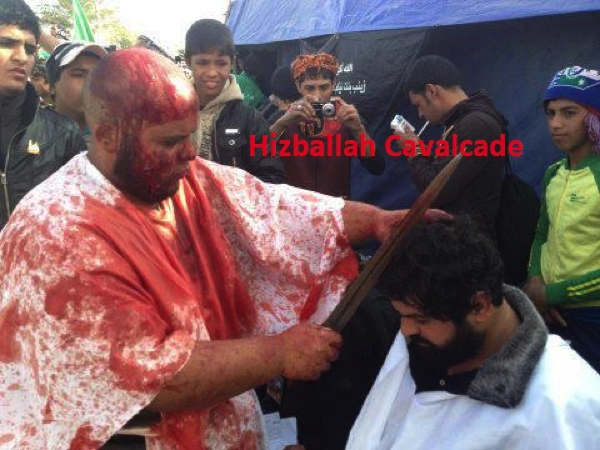
Figure 24: Zarkani (right) having his head cut with a sword during the practice of zanjeer zani.

3 Replies to “Hizballah Cavalcade: Selling Sectarianism: Shia Islamist Groups & Maliki’s Anbar Offensive”
Comments are closed.